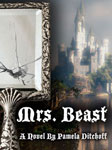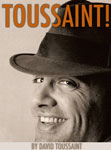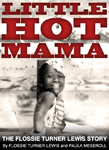By s.i. wells
Special Assignment
From the days of Gutenberg to his modern day disciples, a myth has existed that a physical book lasts forever. Certainly, some have withstood the test of time. However, when Pocket Books invented the mass-market, pocket-sized paperback in 1938 with its publication of The Good Earth by Pearl Buck, the publishing world changed. During the next seventy years or so, the inexpensive paperback book dominated the mass-market delivery of written content - cheap, small and disposable, even to the extent that unsold paperbacks are stripped of their covers for a “return” credit from the publisher and the balance of the once hallowed book ground into pulp.
Although digital books were available as early as 1993, it was not until Sony introduced its E-ink reader in 2006 that a new mass-market for the delivery of “written” content truly began. Then, with the introduction of the Kindle and the Kindle eBook by Amazon in 2007, along with the nationwide rollout of high-speed broadband service and the spread of WiFi, a true “new world order” of book publishing began - the mass-market, digital eBook was born.
About a year later, the United States entered the Great Recession and the destruction of businesses and business models began in earnest. With consumer spending crippled, unemployment soaring and credit markets closed to the American consumer, the publishing industry’s reliance on physical book sales began to circle the drain. Bookstores around the U.S. started to suffer losses and began a march to near-oblivion. Fast-forward to 2011 and we see Borders in bankruptcy, Barnes & Noble up for sale after reporting losses quarter-after-quarter and small, independent bookstores unable to meet their rent. Furthermore, the crushing deficits of almost all of the 50 states, from California to Illinois to New Jersey, are producing a significant negative impact on both public and school libraries. The bottom line: the publishing industry’s traditional formula for success is no longer working.
One might conclude from the precipitous decline in bookstores that the public has stopped reading, but that is clearly not the case. In fact, in the last three months, it has been reported that eBooks are outselling physical books up to three-to-one at certain retailers. Coupled with declining prices of e-readers and the spread of tablets with apps from booksellers like Amazon and Barnes & Noble, a stunning democratization of book distribution has been unleashed. No longer do the traditional publishing houses, book wholesalers and book retailers have a death-grip on the distribution, display and sale of books. Today, anyone can become a published author and anyone can distribute his or her book across the globe with a few strokes on a keyboard. Of course, without a publisher to filter the flood of manuscripts and to support authors, writers who publish themselves are, with few exceptions, akin to adding one more tree to a dense, dark forest.
Clearly, if the U.S. economy stumbles again and the consumer is forced to retrench once more, the chain bookstores selling physical hard cover and paperback editions will no doubt suffer even more losses. The consequences of renewed harsh economic times will also be felt by the traditional book publishers as their physical book business model comes under further brutal attack from diminishing storefront retail outlets to reduced acquisition budgets at the 11,000 public libraries around the country.
But what is bad for the traditional physical publishers is very good for the reader. As generations become more accustomed to reading books on digital devices, the cost savings of buying a digital book vs. a physical book will win the day. This is not to say that the physical book will become extinct. There will always be a reason for some physical book publishing to exist, but the culture of possessing and reading the written word in physical form is quickly disappearing. For example, to go on a vacation and lug three or four or five books along has always required some inconvenience. To go on a vacation with a digital book reader and carry 10 or even 1,000 books along is a breeze. Or, as the digital educational market matures, young students carrying backpacks filled with heavy textbooks will become a distant memory as they tote only e-readers and tablets preloaded with a semester’s reading and reference materials.
There are some other important factors that distinguish this “new world order” of digital books from the soon-to-be bygone era of the physical book. Each of these factors favors the reader and puts the onus on authors and publishers. First, readers can freely sample the first few chapters of a book at no cost and no commitment. If people don’t like what they read, they don’t have to buy the book. Second, readers can freely comment and post a review about a book they purchased, telling other readers the good, bad or ugly truth about a particular title. And, third, if a reader purchases an eBook and doesn’t like it, the digital book can be returned electronically for full credit. The power of the pen is now shared among author, publisher and reader. The bar to produce really excellent books has been raised because the public has the power to vote with its dollars, voice its opinion and get a refund if the author disappoints them.
Which brings me to my assignment of reporting on the results at Stay Thirsty Publishing. Not every book that a publisher publishes is going to be a raging success. However, it has been this publisher’s philosophy to publish books that it is passionate about and that it believes will stand the test of time. So how has Stay Thirsty Publishing been doing in the two-plus years since this division of Stay Thirsty Media was launched as a digital book publisher? The answer brings into clear focus the difference between the physical book and the digital one.
Traditionally, physical books are only available in bookstore outlets for a matter of weeks. Huge bestsellers, of course, often stick around for months or longer, but the majority of books come and go with such speed that even authors have trouble finding their own books in stores.
The digital book, however, is available 24/7/365, for download to a computer or to a wireless device, both in the U.S. and around the world. A fresh copy is always ready regardless of the weather, the time zone or the economic conditions. And, the shelf life of a digital book will be measured in decades or longer, thereby allowing great books the time to find their audience rather than fall victim to retail shelf space turnover.
A few examples from Stay Thirsty Publishing’s catalog will help to make the point:
 |
In March 2009, the first book published by Stay Thirsty Press was MRS. BEAST by award-winning author Pamela Ditchoff. Last month, June 2011, over 27 months after publication, this story of what happened to the famous fairy tale princesses - Beauty of Beauty and the Beast, Snow White, Cinderella and Sleeping Beauty after they said, “I Do!” - was ranked by Amazon at #6 of all Beauty and the Beast eBooks and #17 of all Beauty and the Beast books, regardless of format. |
 |
In May 2009, TOUSSAINT! by pioneering author and social commentator David Toussaint was published. Last month, twenty-five months after its release as an Amazon eBook, TOUSSAINT! was ranked as a Bestseller by Amazon rising to #8 in the Kindle Pop Culture category. |
 |
In October 2009, Schiller & Wells, Ltd. published FORTY YEARS LATER by debut author Steven Jay Griffel, about a Baby Boomer’s reflection of the Woodstock Festival, lost love and missed opportunities. Most interestingly, two recurring themes have emerged over the twenty-one months since its publication, as reflected in the 40 customer reviews posted by the public on the Amazon page for this book - 1) the nostalgia of the Boomers in looking back at their lives over the past forty years is more than just a fleeting idea; and, 2) many first-time digital book readers bought this book and not only enjoyed reading it, but also enjoyed reading it as an eBook. The outpouring of positive reader sentiment catapulted FORTY YEARS LATER in June 2011 to be the #1 Top Rated Amazon eBook in Romantic Suspense, the #1 Top Rated in Contemporary Romance and the #7 in Drama in the U.S. |
 |
At the end of June 2010, Stay Thirsty Press published LITTLE HOT MAMA by Flossie Turner Lewis and Paula Meseroll, an extraordinary autobiography of a woman who was born into a traveling minstrel family in 1933 during the depths of the Depression. It is a story of a woman of strength and determination, a talented performer and jazz singer and a woman who raised five children on her own, despite the fact that she could not read or write. At the age of 65, however, she changed her life, enrolled in high school, learned to read and received her diploma when she was 73. In June 2011, a year after publication of this book, Amazon ranked it as the #1 Top Rated eBook in the Literacy category. |
Under the traditional mass-market/physical book/retail store model, these books would have long been relegated to the dustbin or ground into pulp. The clock would have run them out of existence and the brutal turnover at retail stores would have prevented them from finding their audience. Under the digital model, however, time is on the side of great books with the right stuff, especially where a publisher has the ability to keep spreading the word. Of course, the opposite is also true. Books without the right stuff can be found and the public can and will vote, but the results will not be pretty.
We are living at a moment in time second only to the early days of Gutenberg’s revolutionary invention. The democratization of distribution of the written word via the digital book format is one of those transformative events that historians will write about for decades to come because the transmission of ideas, stories and content across a borderless digital world is indeed a development of epic proportions for authors, publishers and, most of all, readers.

